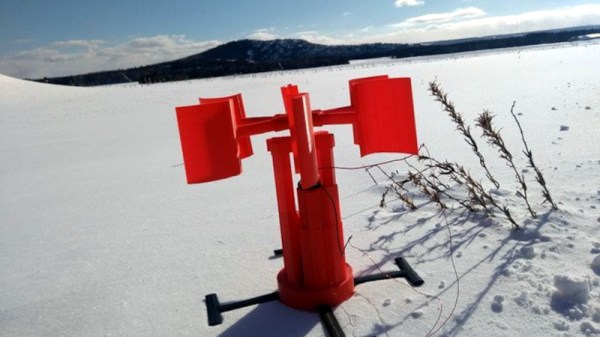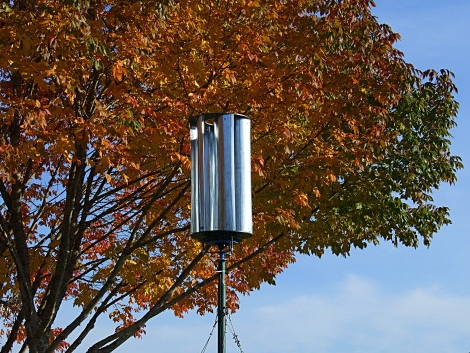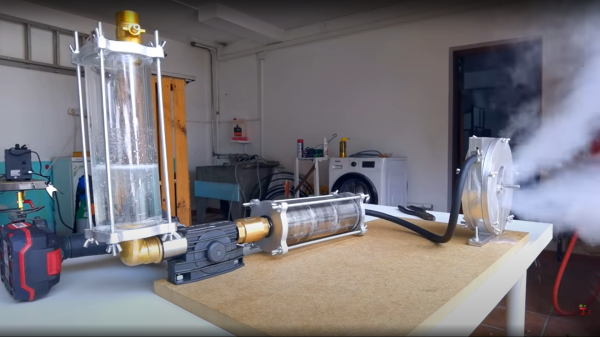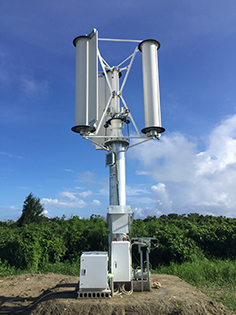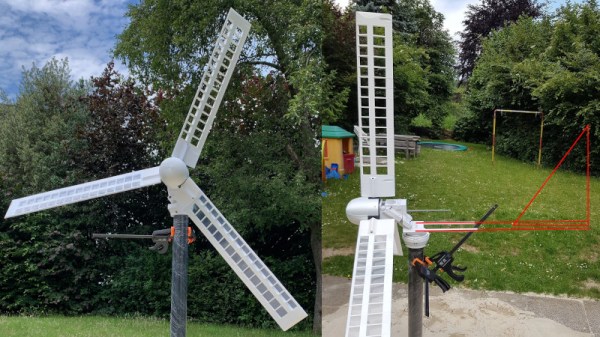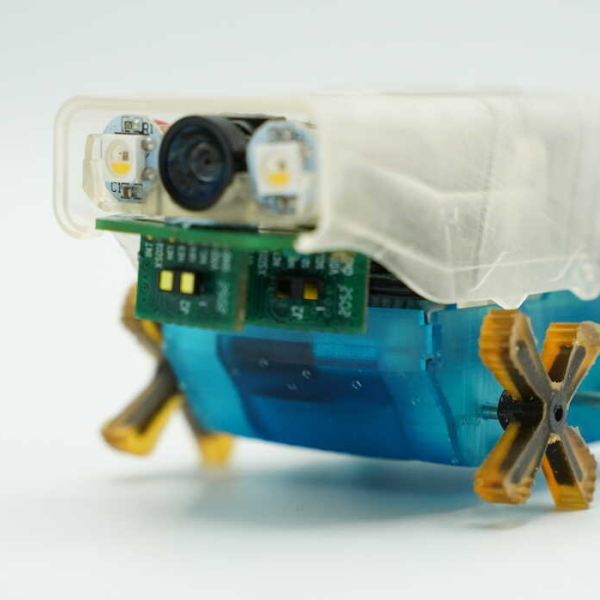[Integza] never fails to amuse with his numerous (and sometimes really sketchy) attempts to create usable thrust, by pretty much all means possible and the latest video (embedded below) attempting to run a reaction turbine from decomposing hydrogen peroxide, doesn’t fail to disappoint. The inspiration came from the WWII V2 rocket, which used Sodium Permanganate to breakdown Hydrogen Peroxide. This produced high pressure steam, which spun a turbine, which in turn drove the turbopumps that delivered the needed huge quantity of alcohol and liquid oxygen into the combustion chamber.
After an initial test of this permanganate-peroxide reaction proved somewhat disappointing (and messy) he moved on to a more controllable approach — using a catalytic converter from a petrol scooter in place of the messy permanganate. This worked, so the next task was to build the turbine. Naturally, this was 3D printed, and the resulting design appeared to work pretty well with compressed air as the power source. After scaling up the design, and shifting to CNC-machined aluminium, it was starting to look a bit more serious. The final test shows the turbine being put through its paces, running from the new precious metal catalyst setup, but as can be seen from the video, there is work to be done.
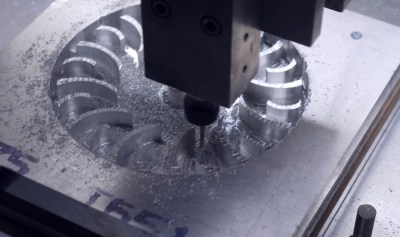 There appears to be a fair amount of liquid peroxide passing through into the turbine, which is obviously not desirable. Perhaps the next changes should be the mount the catalyser vertically, to prevent the liquid from leaving so easily, as well as adding some baffling to control the flow of the liquid, in order to force it to recycle inside the reaction vessel? We can’t wait to see where this goes, hopefully the steam-turbine powered skateboard idea could actually be doable? Who knows? But we’re sure [Integza] will find a way!
There appears to be a fair amount of liquid peroxide passing through into the turbine, which is obviously not desirable. Perhaps the next changes should be the mount the catalyser vertically, to prevent the liquid from leaving so easily, as well as adding some baffling to control the flow of the liquid, in order to force it to recycle inside the reaction vessel? We can’t wait to see where this goes, hopefully the steam-turbine powered skateboard idea could actually be doable? Who knows? But we’re sure [Integza] will find a way!
With steam power, there’s more than one way to get usable rotational work, like using a reciprocating engine, which can be expanded to a whole machine shop, and whilst boiling water (or catalytically decomposing Hydrogen Peroxide) provides high pressure gas, how about just using boiling liquid nitrogen? Possibly not.
Continue reading “A V2 Rocket Inspired Steam Turbine Skateboard Is Just Around The Corner” →

